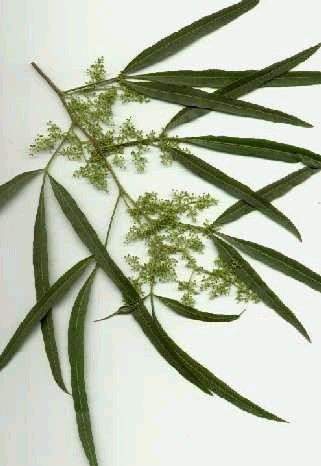African Sumac
Karee
Searsia (Rhus) lancea

This photo was taken in Phoenix, Arizona, January 2005.
TREE : Cultivated tree. Often 4 to 8 m
tall. Branches or multiple trunks have dark, fissured bark and often extend
horizontally almost to a considerable degree with graceful twists and dips.
LEAVES Dark green shiny leaves are palmately compound with 3 to 5
leaflets, and are alternate on the stems.
RANGE: Widely planted in Tucson and Phoenix, Arizona. Native to southern
Africa. Spreading into Sonoran Desert washes and seemingly able to tolerate
drought conditions - could become an invasive weed in this situation.
FLOWERS: Numerous small flowers are borne in dense panicles.
FRUIT: Small berries are greenish red when mature, and are sticky. The fruits
are eaten occasionally by birds thereby distributing the seeds. Plants
frequently volunteer in hedgerows and gardens.